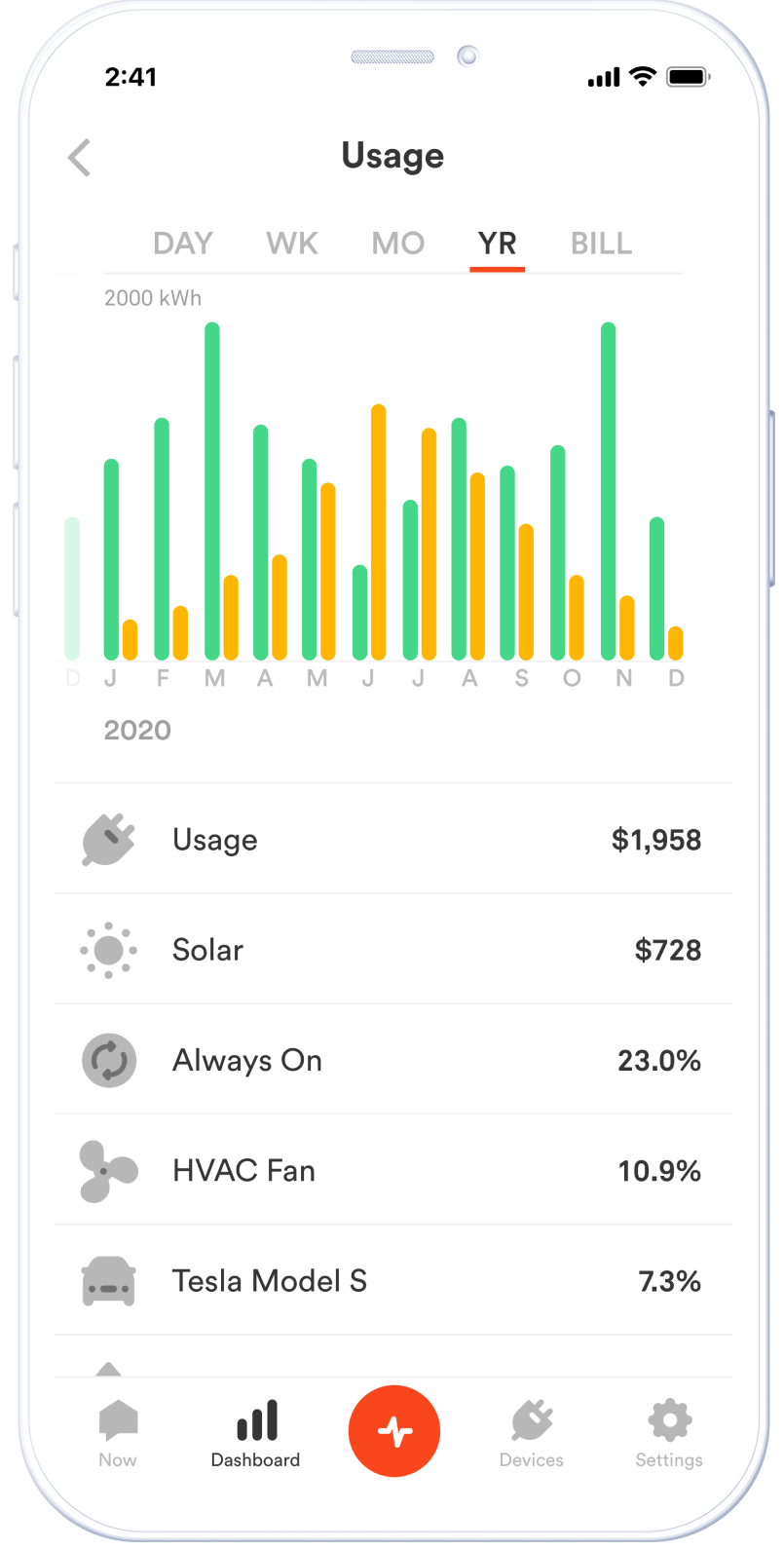There’s a saying “You get what you pay for,” but in one area of daily life, it’s hard to know exactly what you are paying for. Utility bills don’t give up much information besides what you owe for a month’s worth of electricity.
There’s a reason utility bills are mysterious. Your utility meter gathers very limited data. Essentially it tells your utility how much electricity is consumed in your home. That’s it. You don’t know how much your heating or cooling systems contributed to the cost, or whether your washing machine uses more energy than your clothes dryer. And you certainly can’t tell when or how often various appliances turned on or off throughout the month. It doesn’t help that utility bills include charges for obscure items like distribution or revenue decoupling.
If you went to a grocery store and filled your cart with dozens of items, then paid at the cash register, you’d be shocked to receive a receipt that didn’t list the price for each item you bought. But that’s exactly what a utility bill does, leaving people in the dark about the impact of their habits or which appliances use how much energy. Without detailed information, it’s a challenge to budget or control expenses.

At Sense, we think people should know more about what’s going on in their homes. The Sense home energy monitor tells you how much energy the devices in your home are using, and what’s on or off, so you can figure out how to make your home more efficient. In the Sense app, you can track devices, know how much electricity they use and its cost, and set alerts and goals. You can match your utility bill’s cycle and set goals. Sense will send you alerts if your costs are trending higher than your monthly goal – no more surprises on your utility bill. Because the Sense monitor detects the total electricity as it enters your home, it matches your utility bill very accurately.

While the information on your utility bill is limited compared to the wealth of data you can find with Sense, you can learn some important things from a monthly utility bill.
How much your energy costs overall
In your latest monthly bill or at your online account, look at the amount due to the utility. Is it what you were hoping or expecting it to be? Can you fit it into your current budget? Your electricity bill is not outside of your control. Whether you want to save money or simply live more responsibly on the planet, there are many ways to lower your bill while maintaining a comfortable lifestyle, starting with identifying the energy hogs and vampires in your home.
How much electricity are you using every month?
Your bill itemizes your monthly electric usage two ways: a bar graph shows you how many kilowatt-hours (kWh) you used over the past 12 months along with average monthly temperatures and a table lists the exact KwH each month. Looking at the bar graph, you have an idea about seasonal changes. For instance, in the winter months, your bill may be higher because you have electric baseboard heating, or the summer months may be higher due to air conditioning.

In the Sense app, you can compare the total kWh on your bill with Sense’s reporting and see more granular data about devices in your home. Use that information to figure out if you have an energy hog that could be eliminated.
While some utilities charge a flat rate per kWh, many utilities have adopted more complex pricing based on time of use or tiered rates. These rates are designed to incentivize lower usage, especially during peak periods that require utilities to tap more expensive sources of energy. With tiered rates, your rate increases in a stepwise fashion, becoming more expensive as the total monthly usage increases. Time of use rates typically rise during high demand periods of the day.

If you have a tiered rate plan, set goals in the Sense app so you can limit your consumption to stay within the lower rates. Track down energy hogs in your home and turn them off or eliminate them. You may even find that upgrading an old appliance or water heater will pay off quickly in reduced utility bills. Turn off consumer electronics that waste energy when they’re not in use.
If you have a time of use plan you can set-up your time of use billing plan in the Sense app (learn more here.) This will enable you to shift your most energy-consuming activities to the hours with lowest rates. For instance, you can run washers, dryers and dishwashers almost any time of the day or evening. Figure out the best way to keep air conditioning and electric heating to a comfortable but minimal level during peak charges.
What are those total charges anyway?
Your bill will include a list of everything that goes into your total cost of electricity with terms like distribution, transition, transmission, revenue decoupling, distributed solar, renewable energy and energy efficiency. As regulated businesses, utilities have negotiated these charges into their fee to cover the costs of running their big distribution networks and meeting state goals like transitioning to greener energy sources.


Depending on where you live, you may have options in the choice of an electricity provider. A retail energy supplier may offer different rates and contract terms that could help you save money, but the utility still provides the network of wires that delivers electricity to your home. If you choose a retail energy supplier, you can still expect to pay for the charges associated with that utility delivery service.
If there’s an energy efficiency charge on your bill, your state has mandated that utilities must offer programs that help homeowners make their homes more energy-efficient. The programs offer free and low cost services to utility customers. You subsidize those programs, so visit the utility’s website and find out how you can take advantage of them. For instance, adding insulation is a great way to reduce energy use in an older home. Many utilities offer rebates on home improvements like upgrading your insulation or updating inefficient furnaces and water heaters.
